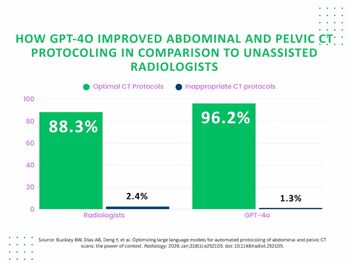
PET/CT Surveillance for Head, Neck Cancers and Dissections
Using imaging to assess head-and-neck cancer patients posttreatment saves money.
Image-guided surveillance may help detect the need for, and guidance of, neck dissection among patients with advanced nodal disease of the head and neck, avoiding the need for some posttreatment surgeries, according to a study published in the
Researchers from the United Kingdom performed a prospective randomized controlled trial to assess the effectiveness of PET/CT-guided surveillance in the management of advanced (N2-N3) nodal disease of head and neck squamous cell carcinoma patients treated with primary chemoradiotherapy, in comparison to planned neck dissection. The PET/CT was performed 12 weeks after end of treatment with neck dissection done only if PET/CT showed incomplete or equivocal response. The co-primary endpoint was overall survival.
A total of 564 patients participated in the study, 282 in the planned neck dissection arm and 282 in the surveillance arm; 17% were diagnosed with N2a stage disease, 61% with N2b, 18% with N2c, and 4% with N3. Among the 564 patients, 84% had oropharyngeal cancer and 75% were human papillomavirus p16 positive. Median follow-up was 36 months.
The results showed fewer neck dissections in the surveillance group:
"After treatment, remaining cancer cells play something akin to 'hide and seek'. Our study shows that using this PET-CT scan we can hunt them down, find them and remove them effectively," coauthor Professor Hisham Mehanna, of the Institute of Head and Neck Studies and Education (InHANSE), University of Birmingham, said in a release.
The quality of life between both groups was similar between both arms of the study. "Patient outcomes, and avoiding unnecessary surgery, are the main goals of this study. But there is a cost saving to be made too,” Mehanna added. “When compared with neck dissection, the PET-CT guided surveillance saved £1,492 (US$2,190) per person for the NHS. Carry that across the tens of thousands of cases each year across the world and you see a significant saving that can be redistributed into other therapies."
The researchers concluded that PET/CT-guided surveillance demonstrated similar survival outcomes to planned neck dissections, but resulted in considerably fewer operations, fewer complications, and was more cost–effective.
Newsletter
Stay at the forefront of radiology with the Diagnostic Imaging newsletter, delivering the latest news, clinical insights, and imaging advancements for today’s radiologists.




























